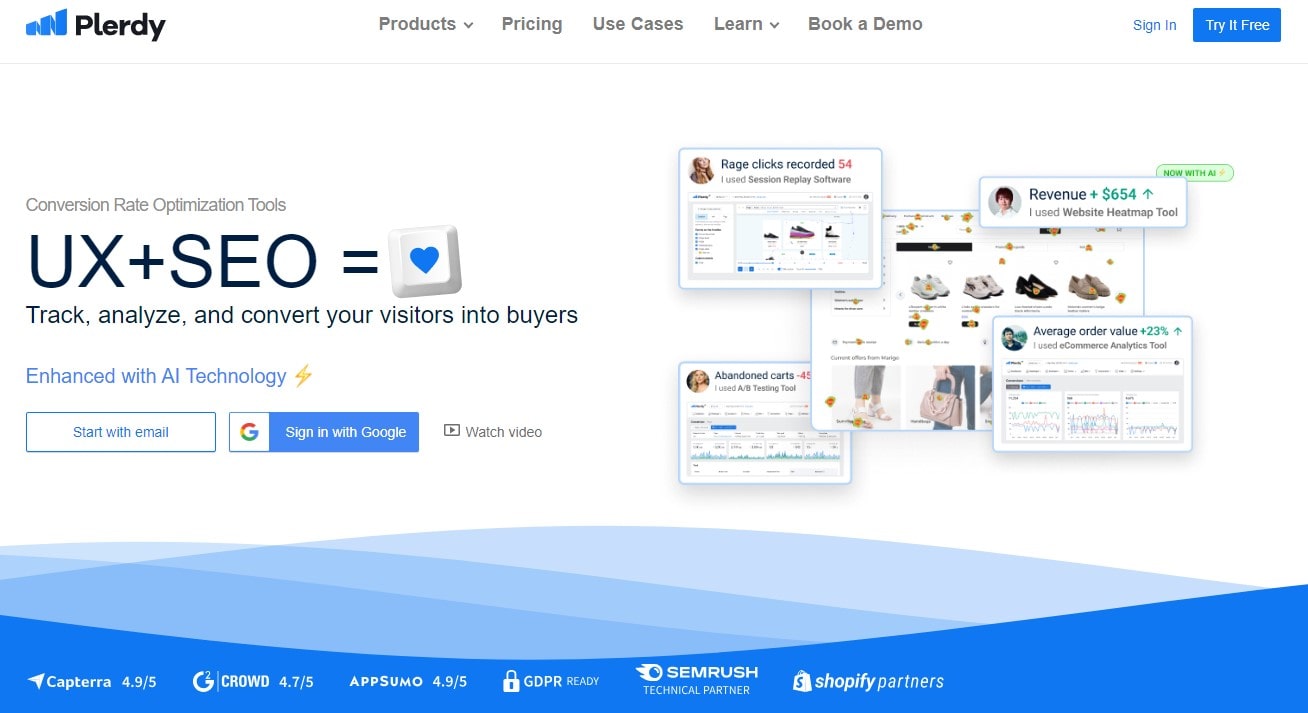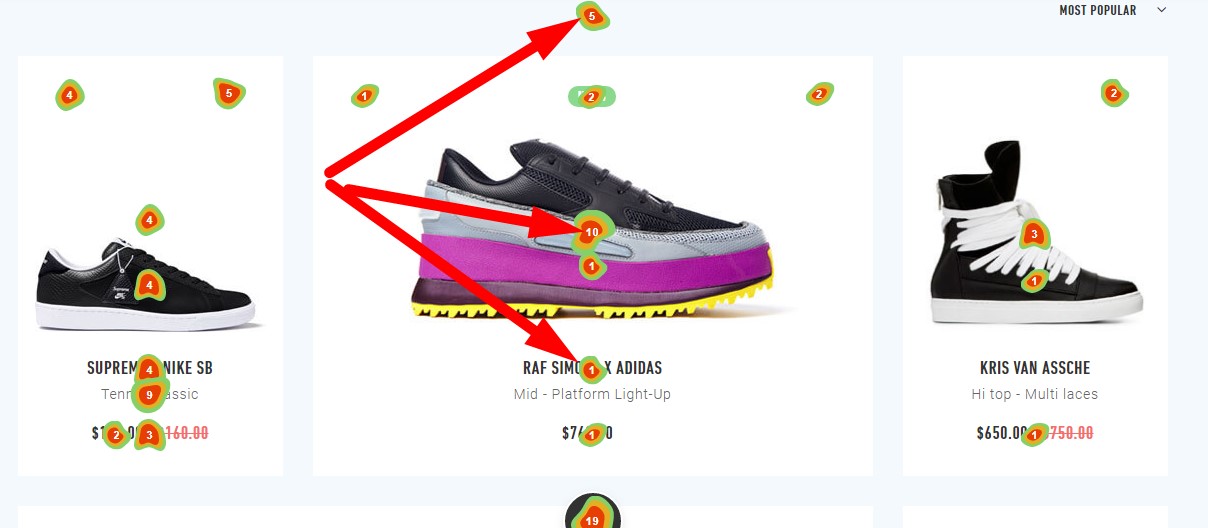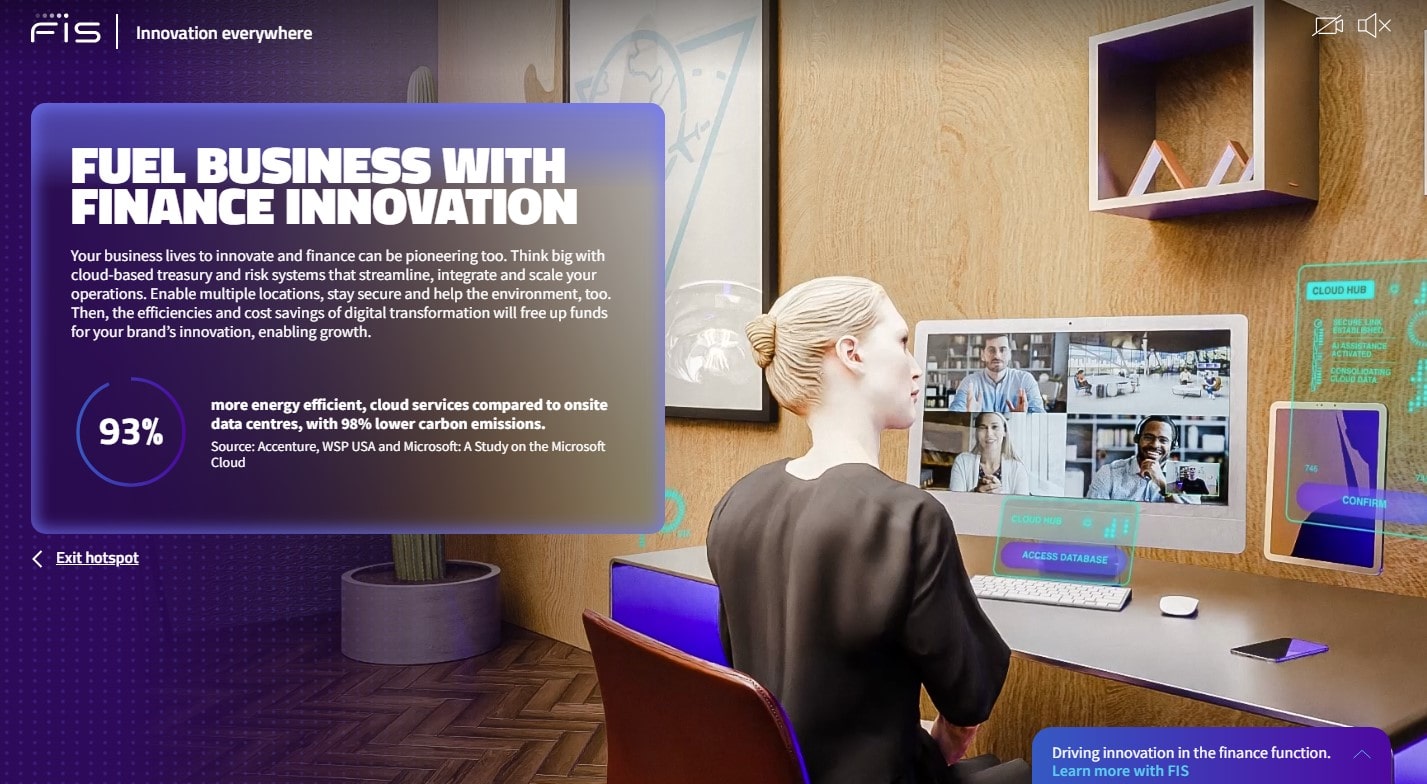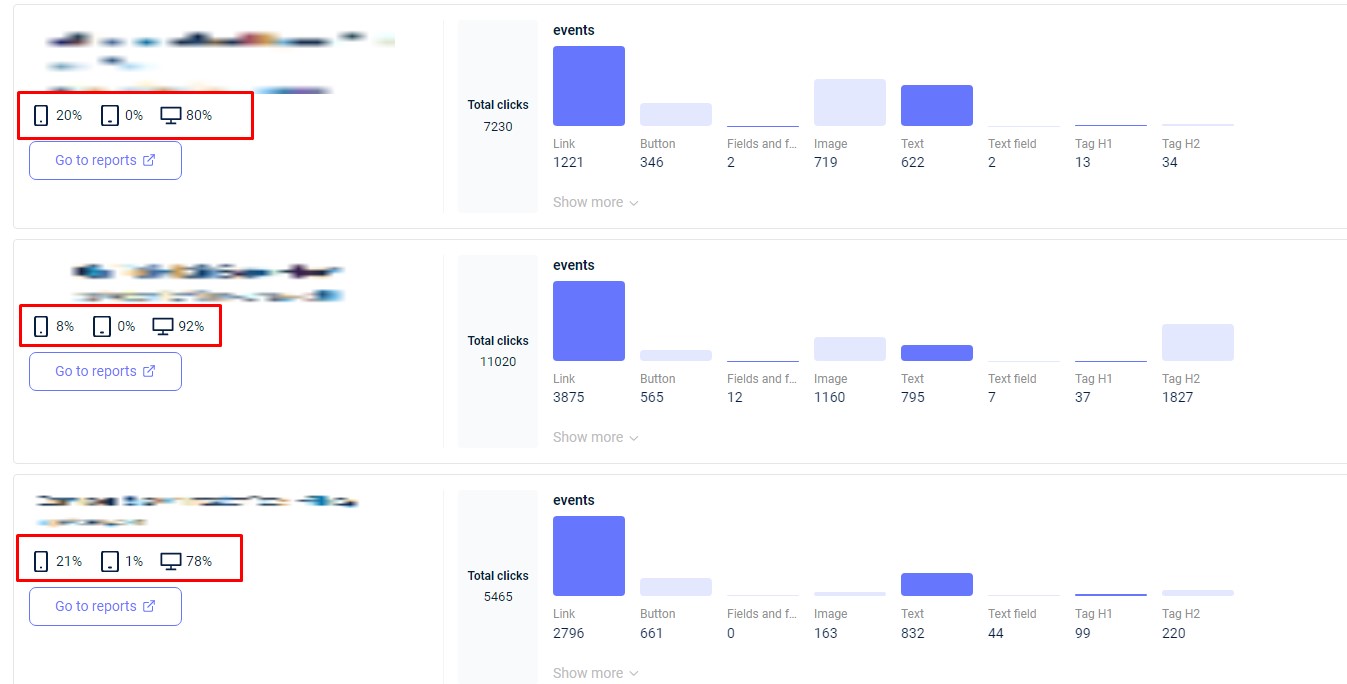Ever tried predicting the future of UX without a crystal ball? It’s like trying to use a floppy disk in the era of cloud storage—futile but amusing. Staying on top of user experience trends is crucial in the ever-changing field. From AI’s role to democratizing research, these trends shape how we interact with digital products. And speaking of staying ahead, Plerdy’s insights and tools are at the forefront of empowering these innovations. Let’s dive into the top UX research trends, setting the pace for 2024 and beyond and ensuring your strategies are current and future-ready.

The Rise of AI and Machine Learning in UX
Imagine if your design could learn from users and adapt in real time. Welcome to the era where AI and machine learning are not just tools but partners in UX research. These technologies are reshaping how we understand user interactions, making the process more intuitive and insights-driven.
Applications of AI in UX Research
AI’s integration into UX research unlocks a treasure trove of possibilities. It sifts through mountains of data, identifying patterns and behaviors that might take humans months to spot. Tools like Plerdy and others utilize AI to track user engagement, clearly showing what works and what doesn’t in real time. This capability enables designers to create more personalized and effective user experiences by anticipating user needs before they are explicitly expressed.
Benefits and Challenges
The benefits of AI in UX research are compelling. It accelerates the research process, offers unprecedented insights into user behavior, and enables the creation of more responsive and adaptive designs. However, the path has its challenges. The industry faces ethical issues regarding data protection and the possibility that AI may miss human interpretation.
Incorporating AI and machine learning into UX research is a journey of balance. While leveraging their strengths, we must also stay vigilant about their limitations. Respected sources like the Nielsen Norman Group offer extensive insights and guidelines for a deeper dive into the ethics and implications of AI in UX.
AI and machine learning are transforming UX. These technologies are setting a new standard for conducting research, offering a glimpse into a future where designs are created not just for users but with users in a dynamic and ongoing dialogue facilitated by AI.
The future is exciting, and AI and machine learning can reinvent user experiences in countless ways. Let’s embrace these changes, mindful of their challenges but optimistic about the innovative possibilities they bring to the UX table.
Continuous UX Research Practices

Gone are the days when UX research was a one-off at the start of a design project. Today, continuous UX research practices are the heartbeat of innovative product development, ensuring products launch successfully and evolve with their users.
Key Principles of Continuous Research
Continuous UX research is grounded in the belief that user needs and behaviors are not static but as dynamic as the market itself. Adopting continuous research means engaging with your users regularly and gathering feedback at every stage of the product lifecycle. This approach enables teams to make iterative improvements, ensuring the product remains aligned with user expectations and market demands. Tools like Plerdy offer invaluable insights by tracking user interactions, enabling teams to make data-driven decisions swiftly.
Implementing Continuous Research in Teams
Embedding continuous research into a team’s workflow requires a shift from seeing research as a phase to integrating it as a regular practice. It involves setting up systems for regular user feedback, such as surveys, usability tests, and in-product analytics. Moreover, it’s about democratizing access to user insights, ensuring that researchers, product managers, designers, and developers understand and can act on user feedback.
Continuous research has its challenges. It requires resources, tools, and a culture that values user feedback. However, the benefits far outweigh the costs. Products become more user-centric, teams can respond to issues before they become problems, and the overall user experience is greatly enhanced.
Remember that continuous UX research is more than a methodology; it’s a commitment to your users. It’s about building products that grow and adapt as your users do. In a world where user needs are constantly changing, continuous research is not just beneficial; it’s essential. Embrace it, and watch as your products and user experiences transform for the better.
Democratization of UX Research
The democratization of UX research is a revolution in a fast-paced industry where every second counts and user pleasure is paramount. By breaking down the silos, it brings insights into the hands of those who need them most: the makers and the doers.
Advantages of Research Democratization
The democratization of UX research empowers teams beyond the UX researchers. It enables product managers, designers, and even marketers to conduct their research, making user insights more accessible and actionable across the board. Inclusivity speeds up decision-making and promotes user empathy, resulting in goods that resonate with the target audience. A tool like Plerdy, which provides easy-to-understand user behavior analytics, plays a crucial role in this democratized landscape, offering insights at everyone’s fingertips.
Challenges and Solutions
However, democratizing UX research comes with its set of challenges. Ensuring the quality of research across different departments can be daunting. There’s also the risk of data overload, where the sheer volume of insights becomes overwhelming rather than enlightening. The solution lies in establishing clear guidelines, training non-researchers, and choosing the right tools that simplify data analysis without sacrificing depth or accuracy. It’s about striking the right balance between autonomy and oversight.
We must recognize that democratizing UX research goes beyond work distribution. It’s about enriching the product development process with diverse perspectives and creating a shared understanding of the user across the organization. By doing so, companies can accelerate innovation and build products that users love, use, and cherish.
Embracing democratization is a step toward a more collaborative, insightful, and user-centered design approach. It offers a future where everyone involved in product development collects, shares, understands, and acts on UX research recommendations.
Emphasis on Sustainability and Ethics in UX Research

UX prioritizes ethics and sustainability as the world becomes more aware of its finite resources. This shift isn’t just about doing good; it’s about ensuring the longevity and relevance of products in a market that values responsibility and integrity.
Sustainable UX Research Practices
Sustainable UX research practices mean conducting studies and gathering data without depleting natural or societal resources. This approach involves using digital tools to minimize physical waste and opting for remote research methods that reduce carbon footprints. Moreover, sustainability in UX extends to designing products that are not only eco-friendly but also durable and easily recyclable at the end of their life cycle. Implementing these practices demonstrates a commitment to environmental stewardship and can significantly enhance a brand’s reputation and appeal.
Ethical Considerations in UX Research
Ethics in UX research encompasses various considerations, from ensuring user privacy and data protection to obtaining informed consent and avoiding bias in research methodologies. It’s about respecting research participants’ dignity and rights and ensuring that the products created serve their needs without exploitation or harm. The UX community is rallying around ethical standards, with organizations like the Interaction Design Foundation offering guidelines and resources to help researchers navigate these complex issues.
The discipline of UX research must evolve toward sustainability and ethics. These principles help us design products that meet people’s demands and make the world more equal and sustainable.
This focus on sustainability and ethics is more than just the right thing to do; it will define the future of UX research. As professionals, we can influence significant change, making every design decision an opportunity to positively impact the planet and its inhabitants.
The Integration of VR and AR in UX Research

Diving into a user’s world has never been as literal as it is with VR (Virtual Reality) and AR (Augmented Reality) integration in UX research. These technologies are not just about cool gadgets; they transform how we understand and design user experiences.
VR and AR for Enhanced User Insights
VR and AR technologies offer a unique opportunity for UX researchers to immerse themselves in the user’s environment, providing a depth of understanding previously unattainable. Researchers can examine how users engage with a product or service by imitating real-world settings. This immersive experience allows for more accurate and detailed feedback, highlighting usability issues and uncovering user needs that might be overlooked in traditional research settings.
Case Studies and Applications
VR and AR have huge promise in UX research. IKEA’s app lets users see furniture in their homes before buying, revolutionizing retail UX. Similarly, automotive companies are using VR to simulate driving experiences, enabling them to test user reactions to dashboard layouts and control placements without physical prototypes. These applications demonstrate the versatility of VR and AR and underscore their ability to create more engaging and meaningful research interactions.
VR and AR transform UX research by giving designers unique insights into user behavior and preferences, enabling precise and empathetic design.
VR and AR in UX research advance user-centered design. As these technologies become more accessible, their role will grow, offering exciting opportunities for innovation and deeper user understanding. Embracing VR and AR is about unlocking UX research’s full potential to create products that truly resonate with users.
The Focus on Inclusive and Accessible Design
UX research must prioritize inclusive and accessible design in a world as diverse as the colors we perceive. Digital products should be usable and entertaining for everyone, regardless of ability or background.
Strategies for Inclusive Research
Inclusive UX research starts with recognizing and valuing diversity among users. This means actively seeking participants from a wide range of demographics, abilities, and backgrounds to ensure that the research insights reflect the diversity of the user base. Strategies include:
- Using accessible recruitment methods.
- Creating research materials that are easy to understand and interact with.
- Employing tools and technologies that accommodate various disabilities.
Using these methods, UX researchers can discover more user demands and preferences, resulting in designs for a wider audience.
Accessibility Standards and Compliance
Making things accessible to as many users as feasible requires following accessibility standards like the Web Content Accessibility Guidelines (WCAG). Compliance with these standards ensures that digital products are perceivable, operable, understandable, and robust for users with different abilities. Moreover, incorporating accessibility into the design process from the outset, rather than as an afterthought, can significantly enhance the user experience for everyone, not just those with disabilities.
UX is changing due to inclusive and accessible design. It’s a commitment to empathy, equity, and excellence in design that benefits all users.
Inclusivity and accessibility in UX research are strategic advantages, not moral obligations. It opens products to wider audiences, fosters brand loyalty, and drives innovation. As the digital world continues to evolve, let’s ensure it does so in a way that includes everyone, building a more accessible and inclusive future one design at a time.
Leveraging Big Data for Deeper UX Insights

In the vast ocean of digital interactions, big data is the lighthouse guiding UX researchers to safer, more user-centric shores. It’s not just about collecting data; it’s about transforming vast information into actionable insights that enhance user experiences.
Big Data in Understanding User Behavior
Big data offers a comprehensive view of user behavior, preferences, and pain points by analyzing interactions across multiple touchpoints. This wealth of information enables UX researchers to identify patterns and trends that might not be evident through traditional research methods. For example, analyzing large datasets can reveal how different user segments navigate a website, allowing for more targeted and effective design improvements. The key is using advanced analytics tools and techniques to sift through the data and extract meaningful insights to inform design decisions.
Challenges and Opportunities in Big Data Analytics
While the potential of big data in UX research is immense, it comes with its challenges. Due to the volume of data, accessing relevant data might be difficult. Data privacy and security are crucial as users become more concerned about how their data is used. However, these challenges are manageable. UX researchers can overcome these limitations and maximize big data potential with machine learning algorithms and data anonymization.
Leveraging big data for deeper UX insights is beneficial and essential for creating products that meet users’ needs.
Big data transforms UX research by providing unprecedented user behavior insights and enabling innovation. As we move forward, the ability to effectively harness and analyze big data will become a key differentiator for organizations seeking to deliver exceptional user experiences. Let’s embrace the power of big data, not as a challenge to overcome but as an opportunity to deepen our understanding of users and create more engaging, effective, and user-centric products.
Conclusion
As we’ve navigated through the seas of UX research trends, it’s clear that staying ahead means embracing innovation, inclusivity, and data-driven insights. From AI’s transformative power to the critical importance of accessibility, these trends are not just shaping the present—they’re crafting the future of user experiences. But why stop here? Dive deeper into the world of UX with more articles from Plerdy, where insights turn into action. Ready to turn these trends into tangible results for your website? Explore Plerdy’s analytics and feedback tools suite to elevate your UX game today. Let’s not just follow the trends—let’s set them.
